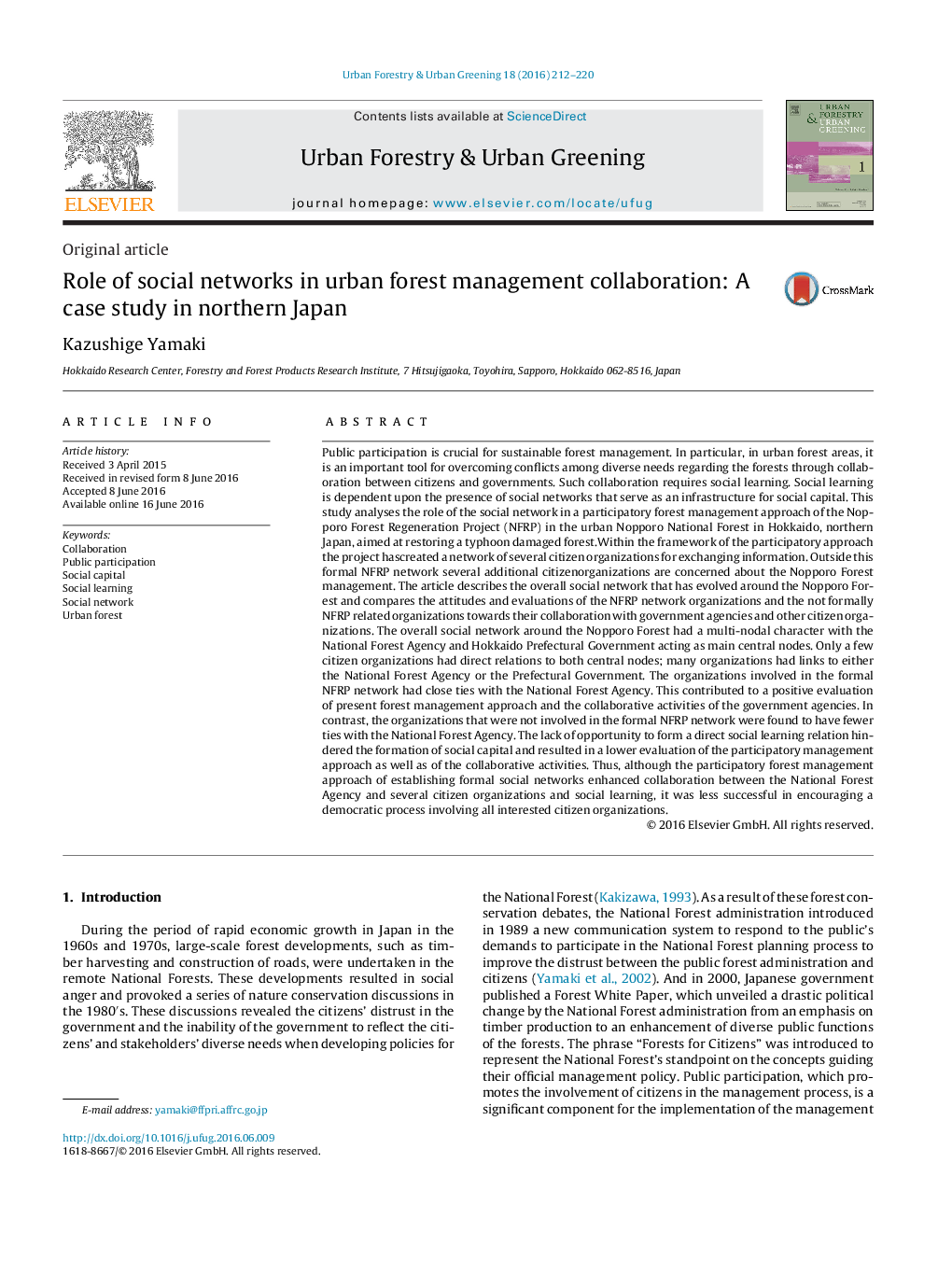| کد مقاله | کد نشریه | سال انتشار | مقاله انگلیسی | نسخه تمام متن |
|---|---|---|---|---|
| 93953 | 160239 | 2016 | 9 صفحه PDF | دانلود رایگان |
• Collaboration between citizens and governments is crucial for urban forest management.
• A participatory forest management approach generates social networks.
• Citizen organizations positively evaluate the collaboration.
• Social networks contribute to the positive evaluation of the collaboration.
• A participatory forest management approach enhances collaborative social learning.
Public participation is crucial for sustainable forest management. In particular, in urban forest areas, it is an important tool for overcoming conflicts among diverse needs regarding the forests through collaboration between citizens and governments. Such collaboration requires social learning. Social learning is dependent upon the presence of social networks that serve as an infrastructure for social capital. This study analyses the role of the social network in a participatory forest management approach of the Nopporo Forest Regeneration Project (NFRP) in the urban Nopporo National Forest in Hokkaido, northern Japan, aimed at restoring a typhoon damaged forest.Within the framework of the participatory approach the project hascreated a network of several citizen organizations for exchanging information. Outside this formal NFRP network several additional citizenorganizations are concerned about the Nopporo Forest management. The article describes the overall social network that has evolved around the Nopporo Forest and compares the attitudes and evaluations of the NFRP network organizations and the not formally NFRP related organizations towards their collaboration with government agencies and other citizen organizations. The overall social network around the Nopporo Forest had a multi-nodal character with the National Forest Agency and Hokkaido Prefectural Government acting as main central nodes. Only a few citizen organizations had direct relations to both central nodes; many organizations had links to either the National Forest Agency or the Prefectural Government. The organizations involved in the formal NFRP network had close ties with the National Forest Agency. This contributed to a positive evaluation of present forest management approach and the collaborative activities of the government agencies. In contrast, the organizations that were not involved in the formal NFRP network were found to have fewer ties with the National Forest Agency. The lack of opportunity to form a direct social learning relation hindered the formation of social capital and resulted in a lower evaluation of the participatory management approach as well as of the collaborative activities. Thus, although the participatory forest management approach of establishing formal social networks enhanced collaboration between the National Forest Agency and several citizen organizations and social learning, it was less successful in encouraging a democratic process involving all interested citizen organizations.
Journal: Urban Forestry & Urban Greening - Volume 18, 1 August 2016, Pages 212–220
